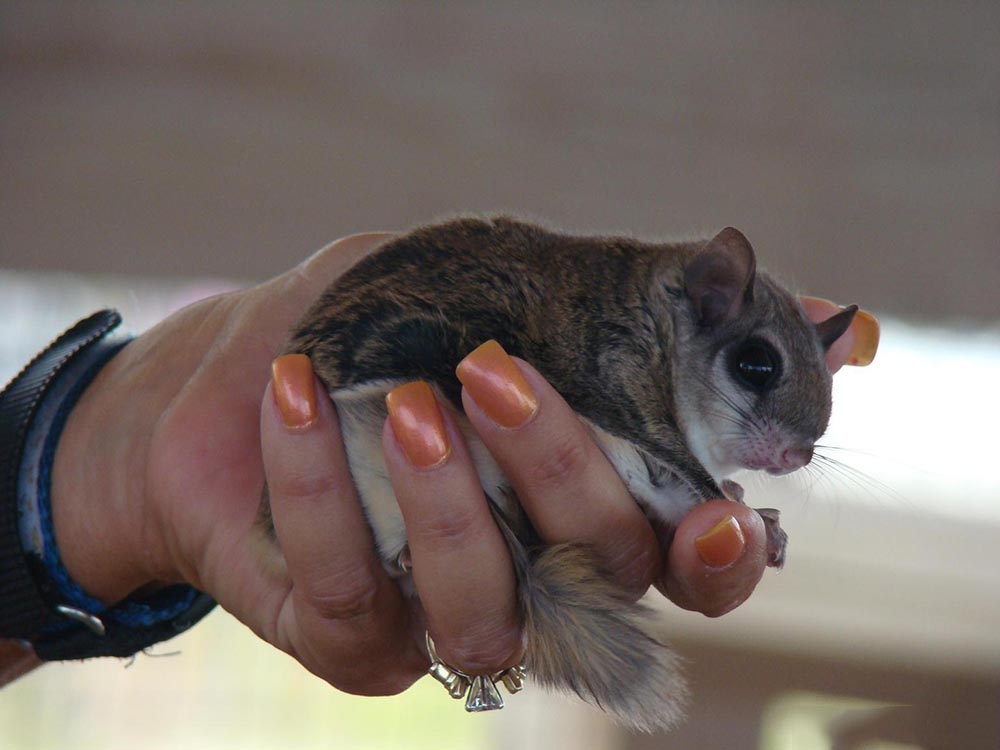

The average life span is estimated at five years. Owls and house cats are major predators of flying squirrels foxes, coyotes, weasels, skunks, raccoons and black rat snakes also take them. Although small and apparently docile, flying squirrels are the most predaceous of the tree squirrels eating moths, beetles, insect larvae, spiders, birds and their eggs, small mice and shrews and carrion. They store surplus nuts in their dens and also bury them in the ground. Foodįlying squirrels eat nuts seeds winter buds of hemlock, maple and beech tree blossoms and sap fruits berries ferns and fungi, both above-ground and subterranean types. A good way to look for them is to rap a stick against trees or branches that have cavities the squirrels may stick their heads out or emerge to see what’s going on. Flying squirrels may be more common than many people think. The southern flying squirrel may produce two litters per year, with the second litter arriving in September. Adult males do not help the females rear the young. The young are weaned after about two months. After a gestation period of about 40 days, 2 to 7 young (on average, 3 or 4) are born in April, May or June. They nest in hollow tree limbs and woodpecker cavities and sometimes in large birds’ nests, which they cap with shredded bark and leaves. They are rarely seen, since they are nocturnal. Biologyįlying squirrels are mainly arboreal, although they also forage on the ground.

It uses its broad, flat tail as a rudder. A flying squirrel can sail up to 40 yards in a downward direction.
SOUTHERN FLYING SQUIRREL SKIN
The so-called flying membrane is a loose flap of skin between the fore and hind legs on either side of the body when a flying squirrel extends its legs, they stretch the membrane taut, making an airfoil on which the animal can glide from one tree to another or from a tree to the ground. The large, dark brown eyes are adapted for night vision. The soft, velvety fur is grayish brown on the back and pearly white on the belly. The southern flying squirrel is slightly smaller than the closely related northern flying squirrel, and much more common in Pennsylvania. A Principal Component Analysis clearly separated re-sequenced individuals, while inferring population size history using the Pairwise Sequentially Markovian Coalescent model noted an approximate species split one million years ago, and a single, possibly recently introgressed individual.The southern flying squirrel is found throughout Pennsylvania it occurs from southern Maine to Florida and from Minnesota to Texas, with isolated populations in Mexico and Central America. The four short-read individuals were aligned to our reference genome to investigate the demographic history of the two species. Benchmarking Universal Single-Copy Orthologs reconstructed 3,742 (91.2%) complete mammalian genes and genome annotation using RNA-seq identified the locations of 19,124 protein-coding genes. The final genome assembly consisted of approximately 2.40Gb with a scaffold N50 of 455.26Kb. volans, all from Ontario) were re-sequenced on Illumina platforms. volans individual sampled in southern Ontario, Canada, while four short-read genomes (2 G. We sequenced and assembled a de novo long-read genome from a G. sabrinus are endangered, and thus, interspecific hybridization is a key conservation concern in flying squirrels. Glaucomys hybrid offspring are viable and can successfully backcross with either parental species, however, the fitness implications of such events are currently unknown. These two flying squirrel species exhibit a hybrid zone across a latitudinal gradient in an area of recent secondary contact. Northern flying squirrels are common inhabitants of the boreal forest, also occurring in coniferous forest remnants farther south, whereas the southern flying squirrel range is centered in eastern temperate woodlands. Northern ( Glaucomys sabrinus) and southern ( Glaucomys volans) flying squirrels are widespread species distributed across much of North America.


 0 kommentar(er)
0 kommentar(er)
